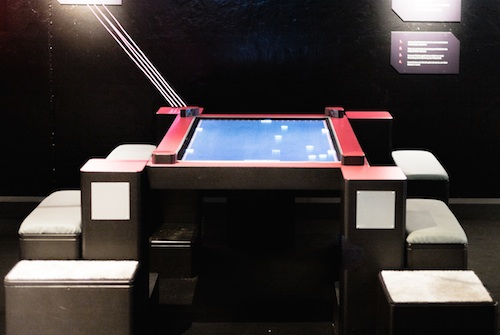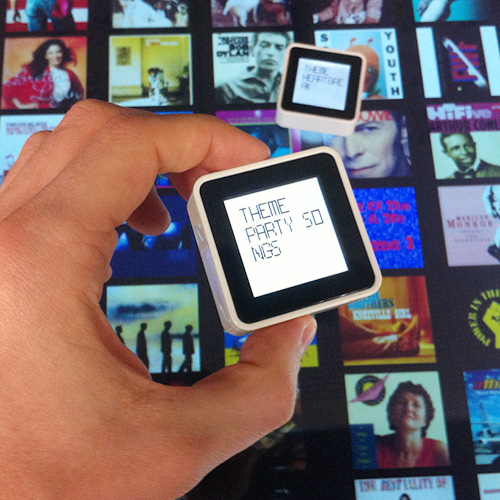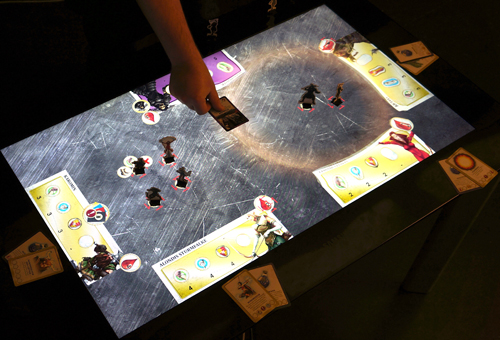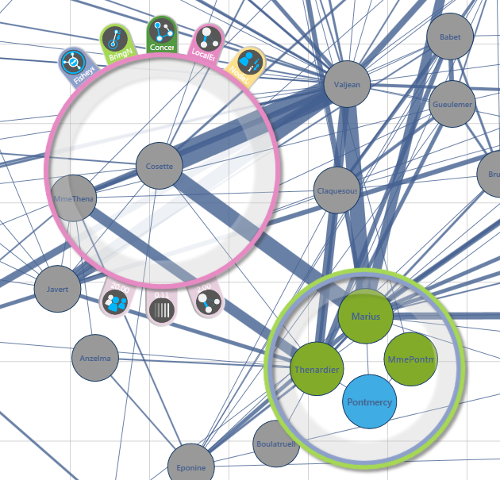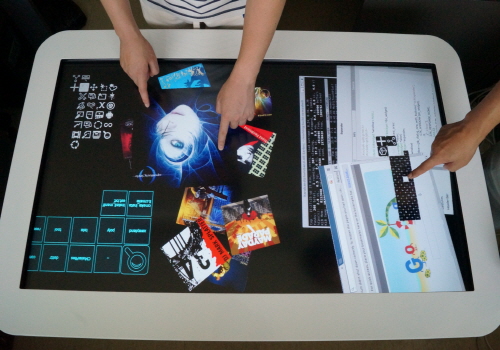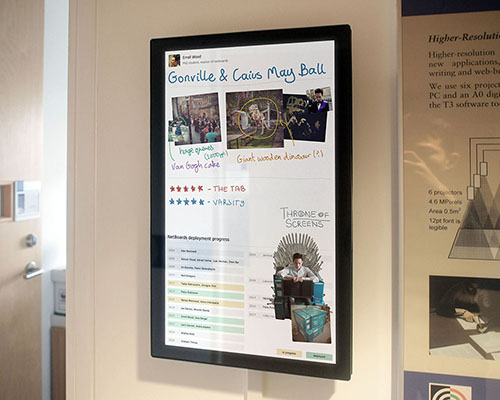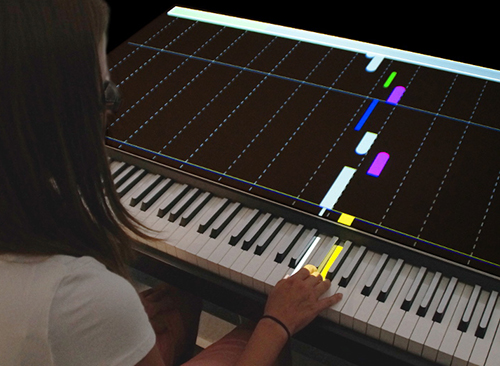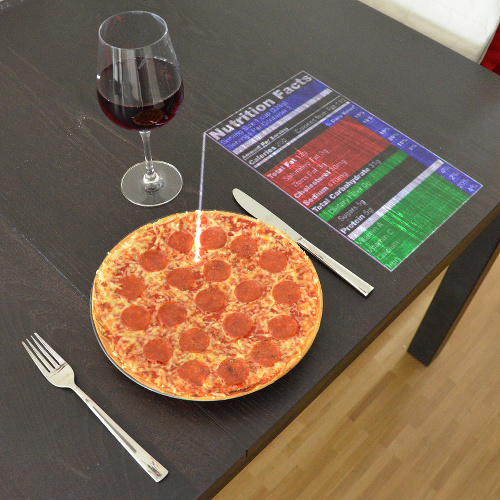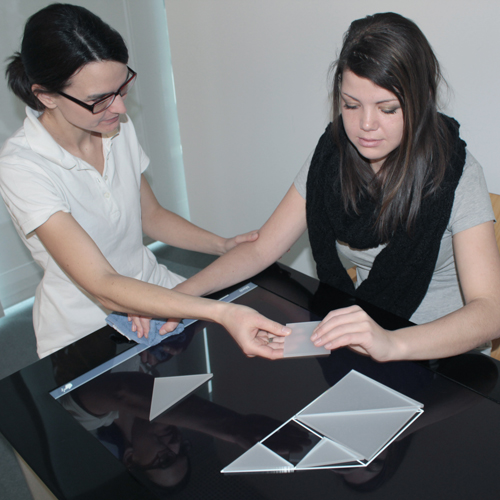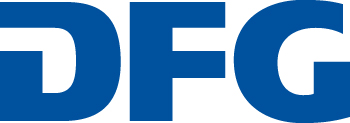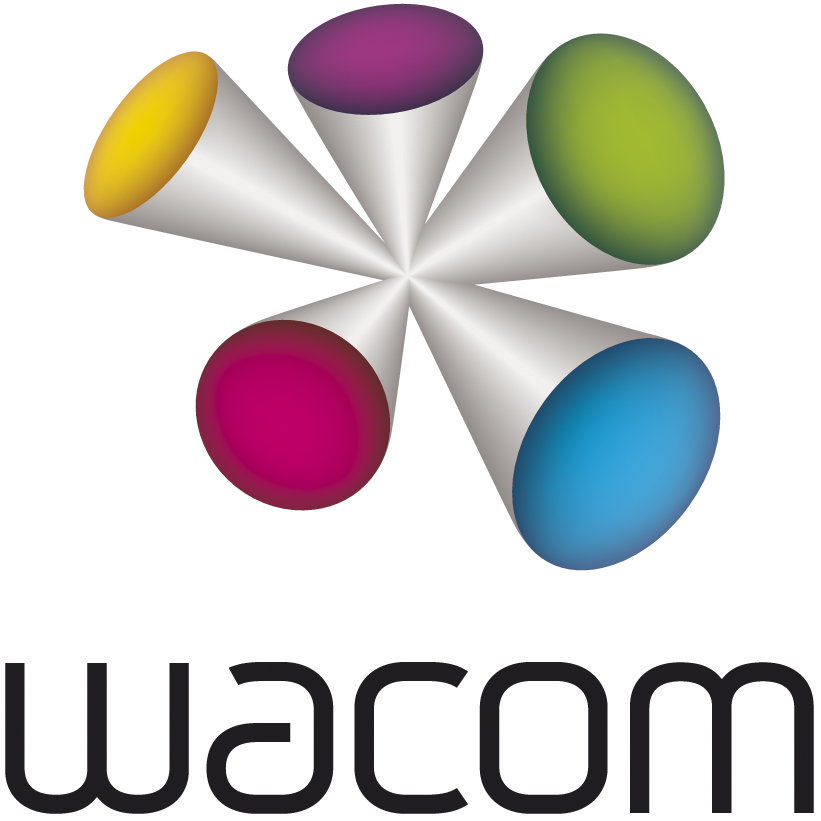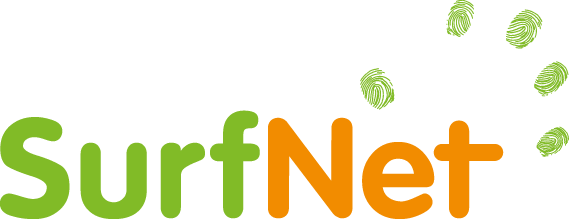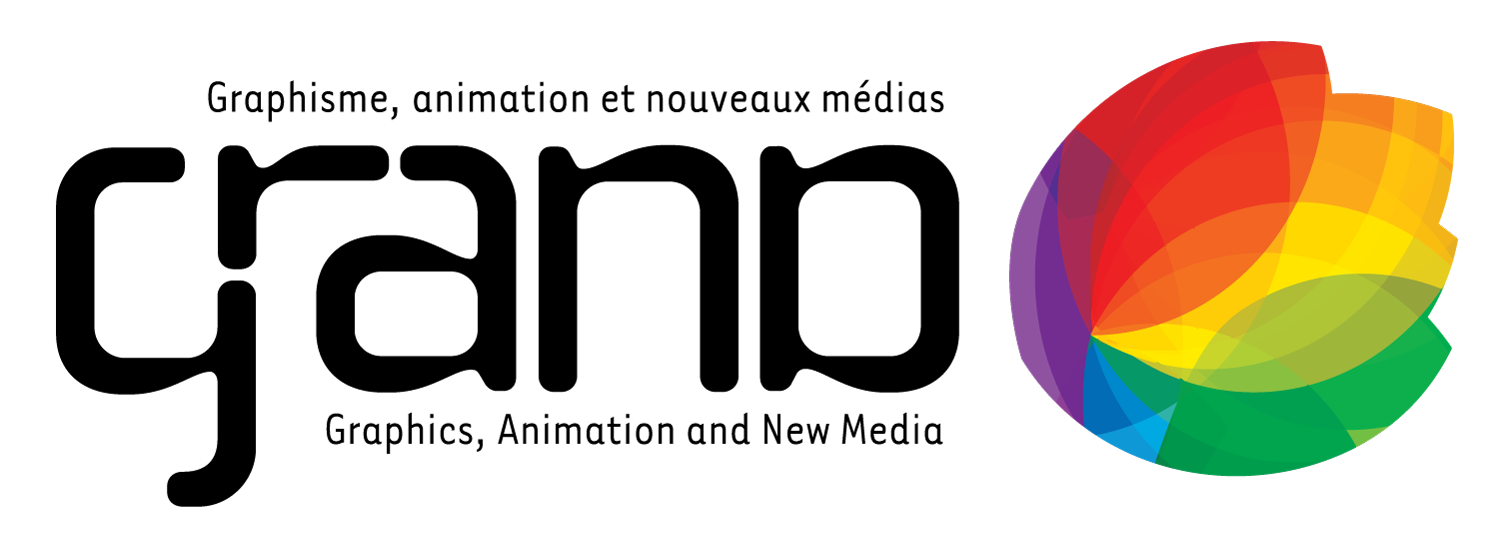Demos
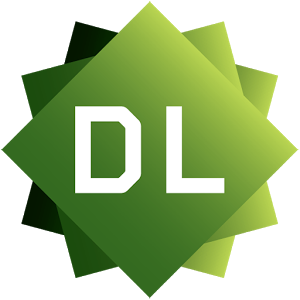
...Click this button to get free pdf access until Nov 2015 provided by ACM OpenTOC service.
BullsEye: High-Precision Fiducial Tracking for Table-based Tangible Interaction 
Clemens Klokmose, Janus Kristensen, Rolf Bagge, Kim Halskov
(Abstract from their accompanying paper) BullsEye improves the precision of optical fiducial tracking on tangible tabletops to sub-pixel accuracy down to a tenth of a pixel. Techniques include a fiducial design for GPU based tracking, calibration of light that allows for computation on a greyscale image, and an automated technique for optical distortion compensation.
ClothLens Demo: Simultaneous Multi-User Interaction with Shared Content on a Tabletop 
Christian Lander, Sven Gehring
Multiple users simultaneously interacting with the shared content by panning or zooming on a tabletop often lead to conflicts due to interference. We present ClothLens, a technique allowing for simultaneous interaction of multiple users with shared digital content. ClothLens utilizes the Focus+Context pattern enabling users to create personal lenses on top of the map. The map is organized as a physical cloth object that can be bend or stretched.
ComforTable - A Tabletop for Relaxed and Playful Interactions in Museums 
Michael Storz, Kalja Kanellopoulos, Claudia Fraas, Maximilian Eibl
The ComforTable is an all-in-one interactive tabletop system with integrated seats and a camera based user tracking system. It allows groups of users relaxed interactions with the interface and was designed for and tested in museums and exhibitions. Applications allow competitive play for up to six players. The tracking system tracks tabletop users to offer them information in their proximity.
CubeQuery: Tangible Interface for Creating and Manipulating Database Queries 
Ricardo Langner, Anton Augsburg, Raimund Dachselt
We demonstrate CubeQuery, a tangible user interface providing a physical way to both create and manipulate basic database queries. This interactive installation is designed for individual faceted browsing and allows users to explore contents of a music library by physically arranging tangibles on an interactive tabletop.
Demonstrating HuddleLamp: Spatially-Aware Mobile Displays for Ad-hoc Around-the-Table Collaboration 
Roman Rädle, Hans-Christian Jetter, Nicolai Marquardt, Harald Reiterer, Yvonne Rogers
We demonstrate HuddleLamp, a desk lamp with an integrated RGB-D camera that tracks movements and positions of mobile displays on a table. HuddleLamp's hybrid sensing combines RGB and depth input for tracking movements of multiple mobile screens with sub-centimetre precision by exploiting their optical characteristics in RGB and IR range.
Demonstration and Applications of Fiberio: A Touchscreen That Senses Fingerprints 
Sven Köhler, Christian Holz, Patrick Baudisch
FlexiWall: Exploring Layered Data with Elastic Displays 
Mathias Müller, Anja Knöfel, Thomas Gründer, Ingmar Franke, Rainer Groh
By their deformable screen-materials elastic displays and projection screens provide physical three-dimensional interaction modalities like push, pull or bend. Compared with conventional Multi-Touch displays they offer an additional interaction dimension which can be used to explore data. Novel techniques and tools are presented to interact with layered data sets.
Fusion of Mixed-Reality Tabletop and Location-Based Applications for Pervasive Games 
Chris Zimmerer, Martin Fischbach, Marc Latoschik
Multi-Touch Manipulation of Magic Lenses for Information Visualization 
Ulrike Kister, Patrick Reipschläger, Raimund Dachselt
NEMOSHELL Demo: Windowing System for Concurrent Applications on Multi-user Interactive Surfaces 
Junghan Kim, Inhyeok Kim, Taehyoung Kim, Young Ik Eom
NetBoards: Investigating a Collection of Personal Noticeboard Displays in the Workplace 
Erroll Wood, Peter Robinson
(Abstract from their accompanying paper) NetBoards are situated displays designed to fulfil and augment the role of non-digital personal noticeboards in the workplace. By replacing these with large, networked,touch-enabled displays, we replicate the existing physical systems' flexibility and ease-of-use, while enabling more expressive content creation techniques and remote connectivity.
P.I.A.N.O.: Faster Piano Learning with Interactive Projection 
Katja Rogers, Amrei Röhlig, Matthias Weing, Jan Gugenheimer, Bastian Könings, Melina Klepsch, Florian Schaub, Enrico Rukzio, Tina Seufert, Michael Weber
(Abstract from their accompanying paper) We propose P.I.A.N.O., a piano learning system with interactive projection that facilitates a fast learning process. Note information in form of an enhanced piano roll notation is directly projected onto the instrument and allows mapping of notes to piano keys without prior sight-reading skills. We report the results of two user studies, which show that P.I.A.N.O. supports faster learning.
The Interactive Dining Table, or: Pass the Weather Widget, Please 
Florian Echtler, Raphael Wimmer
The Usability of a Tabletop Application for Neuro-Rehabilitation from Therapists' Point of View 
Mirjam Augstein, Thomas Neumayr, Irene Schacherl-Hofer
(Abstract from their accompanying paper) This paper describes a study that has been conducted to evaluate selected fun.tast.tisch. (a tabletop system for neuro-rehabilitation) modules. The target group usually involves patients (most of them incurred acquired brain injury) and therapists. The study described here focuses on the usability of the system from therapists’ point of view.


